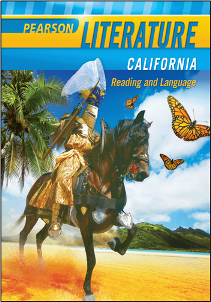The Big IdeaUnderstanding by Design represents a disciplined way of thinking about the design of curriculum, instruction, and assessment. It pulls together many ideas and processes that have been tested both through research and classroom use and proven to give rise to powerful learning experiences that result in deeper understandings of the core facts, concepts, and generalizations, a.k.a., the “Big Ideas”.
Coverage vs. LearningUnderstanding by Design provides a way to move from “covering the curriculum” to “ensuring understanding”. The learning is achieved not through hoping that the “teaching” of content yields understanding, but through carefully-designed instruction derived from the specific understandings and applications sought. The work of learning provides students with the opportunity to investigate, play with, test, and verify key concepts to make sense of content.
Think of traditional standards-based instruction as a list of codes used in building . Think of
Understanding by Design as the process of bringing that building to fruition. From the blueprints, to the building materials, the tools, the construction, and the learners experince it all - students are connected to the learning.
Understanding by Design emphasizes the use of a backward design process to develop instruction.
Rather than beginning the planning process with activities, materials, or textbook content, backward design begins with identifying the desired long-term results sought.
The question of the desired accomplishments serves as the focal point for the planning
of all curriculum, instruction, and assessment and helps avoid superficial coverage.
What does the “backwards design” of UbD look like?Implementing the backwards design process includes three stages:
• Stage 1: identify desired results of instruction
• Stage 2: determine acceptable evidence
• Stage 3: plan learning experiences and instruction
Understanding by Design An Overview (Or what happened to the orange cones?)
"To understand a topic or subject is to use knowledge and skill in sophisticated, flexible ways. Knowledge and skill, then, are necessary elements of understanding, but they are not synonymous with understanding. Matters of understanding require more: Students need to make conscious sense and apt use of the knowledge they are learning and the principles underlying it."
– Grant Wiggins and Jay McTighe Drills and rote memorization have their place in education, but they do not prepare students for real-life. The
Understanding by Design principles challenge students to be critical thinkers, to look for connections, to apply their learing to new situations. Imagine the soccer coach who has prepared his players all week with drills and then watches his team get beat. When he asks his players what happened, they reply that there weren't any orange cones on the field.
Planning the Learning ExperienceTo achieve both content mastery and “understanding,” a curriculum design must take into account the following goals:
• Engages students in inquiry
• Promotes the transfer of learning
• Provides a conceptual framework for helping students make sense of discrete facts and skills
• Uncovers the “Big Ideas” of the content
• Develops appropriate assessment methods to determine the degree of student understanding,
knowledge, and skills
• Considers student misunderstanding or biases that may interfere with instruction
How Does Pearson Literature Support Understanding by Design?• Essential questions that open up each unit, chapter, and or lesson
• Customizable teaching, planning, and assessment tools to design the most effective instruction
• Inquiry-based approach to engage students in uncovering the “Big Idea”
• Real-world connections, activities, and inquiries that make material relevant and meaningful
• Pedagogy and content that help students connect key concepts, identify patterns, and predict outcomes to support enduring understanding.
• A variety of authentic assessment options offered throughout the lesson that effectively measure the degree of understanding
• Meaningful extensions to technology
Where can I find more information?•
http://www.grantwiggins.org/ubd.html Links to a variety of valuable resources.
• Publications can be purchased via
http://www.ascd.org/Glossary of TermsAuthentic assessment task: A task designed to simulate or replicate important, real-world challenges, such as asking a student to use knowledge in contexts where the purposes, audiences, and situational variables are genuine.
Backward design: A process for designing a curriculum or unit by beginning with the end in mind and designing toward that end.
Big ideas: The core concepts, principles, theories, and processes that should serve as the focal point of curriculum, instruction, and assessment.
Enduring understandings: The important ideas or core processes that have lasting value beyond the classroom.
Essential question: A provocative question designed to engage student interest and guide inquiry into the important ideas in a field of study.
Facets of understanding: The six different kinds of understanding identified in Understanding by Design: explanation, interpretation, application, perspective, empathy, and self-knowledge.
The definitions are adapted from the Glossary contained in
The Understanding by Design Handbook (Grant Wiggins and Jay McTighe), 1999, pp. 273-283.





